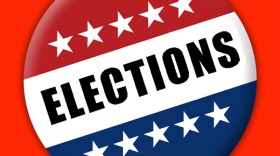Historically, the months leading up to midterm elections have generally been the worst in what is known as the four-year presidential election cycle.
Since 1962, the average return during this time has been about 0.3 percent.
However, this is no average year. With persistent high inflation, continued interest rate hikes, recession fears, the war in Ukraine, supply chain issues and China’s strict COVID policies, investors have seen their portfolios plummet.
Steve Spaulding, a financial advisor with Edward Jones, joined us on KPCW’s Mountain Money Monday to discuss the financial impacts of midterm elections.
“The S&P 500 is down about 21 percent year-to-date. And then a diversified portfolio is also going to have some bonds in it. So if we think about bonds, those are down about 16 percent year-to-date right now. And then of course a lot of investors own other things which might include tech stocks, so NASDAQ down about 33 percent,” Spaulding said.
The midterms could be a turning point and not necessarily because of who controls Congress. History shows us that stocks usually rally in the year after the midterms no matter which side wins. In 17 of the 19 midterm elections since 1946, the market has performed better in the six months following an election than it did in the six months leading up to it.
Republicans, in recent weeks, have picked up momentum in the polls and most analysts see a split government with Republicans regaining control of the House and possibly the Senate.
A divided government typically leads to partisan standoffs and not much in the way of legislation and policy being passed, but investors say gridlock tends to benefit the economy. Spaulding said markets tend to prefer a divided government.
“We may not like when there is gridlock in Congress but the market loves gridlock,” Spaulding said. “The reason for that is it means that nothing is going to be passed, there won’t be any changes in legislation, anything significant that changes, and investors and companies like that because it means that there’s predictability, there’s clarity on what’s coming up down the road.”
United or divided, the stock market has increased under every political combination in Washington with an annual average return of 10 percent per year.
However, Edward Jones shared data collected from 1901 to 2020 that shows the stock market and the economy have performed better under the control of Democrats.
“The stock market and the economy have performed better under Democratic presidents and a Democratic majority in Congress,” Spaulding said. “However, inflation has been lower during Republican presidencies and congressional majorities.”
Edward Jones is warning investors not to play politics with their portfolios and instead focus on what they can control and follow time-tested investment principles.



